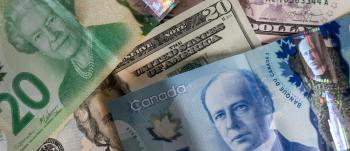Derivatives are contracts that involve underlying assets and can be used for hedging the risk associated with the prices of these assets. Hedging risk plays an important role in driving the popularity of financial derivatives. As well, derivatives play a key role in supporting standardized and transparent trading of commodities in financial markets. Financial markets are a platform that facilitate the efficient trade of goods by bringing lots of buyers and sellers together, standardizing trade, making securities more liquid, and making the flow of capital easier.
Imagine you are a small farmer that grows pineapple in Thailand. Every year you sell your harvest to Dole Food Company, who sells your produce fresh as well as makes a variety of frozen and packaged pineapple foods. You always sell at the market price. This year you're looking to expand your production, and you go to the bank and ask for a new loan. The bank asks you how much revenue you plan to bring in from the sale of the pineapples on your farm next year. You tell them you can't be sure, because the market price for pineapple varies. The bank is hesitant to loan you money in this scenario. As a result, you might consider using one of three types of derivatives to help secure your loan.
The Forward Contract
One solution is to enter into an agreement with Dole to purchase your pineapples at a specified price one year from now when your new harvest is ripe. This reduces the uncertainty about future cash flows. For Dole, this locks in the price of inputs, and reduces risk for them as well. This agreement to sell/purchase a underlying asset at a specified price (strike price) at a future date is known as a forward contract. With forward contracts, both parties are expected to hold up their end of the deal.
The Future Contract
What if Dole offers to buy your pineapple at an unfair price? Maybe you can find another customer? You could sell a future contract for your pineapple. Future contracts are essentially forward contracts, but they are standardized and traded on an exchange. For example, each futures contract for "canned pineapple pieces in light syrup, 20 ounces" on The Agricultural Futures Exchange of Thailand (AFET) represents 1,300 cases of 24-cans of pineapple. In a financial market, other companies (and speculators) will have a chance to bid on these contracts. Speculators are investors who buy securities with the hope that the market price will move in a favorable direction. Near the end of the life of the future contract, a speculator must sell the underlying to a company that will actually take delivery of the underlying asset (in this case, a company that has a use for 1,300 cases of pineapple).
Options
Financial options, like future contracts, are traded on an exchange. Options are very much like future contracts. However, while future contracts represent a promise by both parties to exercise the contract, options give one party the right, but not the obligation, to exercise the contract. For example, what if you think that the market price of pineapple is going to go up, so you don't want to lock yourself into a forward contract with Dole at a potentially unfavorable price? However, without some insurance that the price won't drop, the bank will not give you your loan. As a result, you might try to purchase a put option. A put option is the right, but not the obligation, to sell an underlying asset at a specified price in the future. Therefore, if the market price drops, you have the option to sell your pineapple at this price. However, if the market price goes up like you think it will, you can simply ignore the option and sell your pineapple the way you normally would. Let's say a speculator thinks the market price for pineapple is going up as well. As a result, he might be willing write a put option (sell a put option). If you never exercise the option, he simply keeps the price he sold the option for, making a profit. If the price does drop, he will have to pay the contract price for the pineapple, and find a company that wishes to purchase and take delivery of the pineapple at the market price. He will lose the difference between the market price and the contract price. However, he doesn't think this is going to happen, so he is willing to take this risk.
The world's largest derivatives marketplace company is the CME Group Inc., which owns and operates The Chicago Mercantile Exchange, The New York Mercantile Exchange, the Chicago Board of Trade and Commodity Exchange Inc. (COMEX).
Photo by Phoenix Han on Unsplash
© BrainMass Inc. brainmass.com June 29, 2024, 11:09 pm ad1c9bdddf


